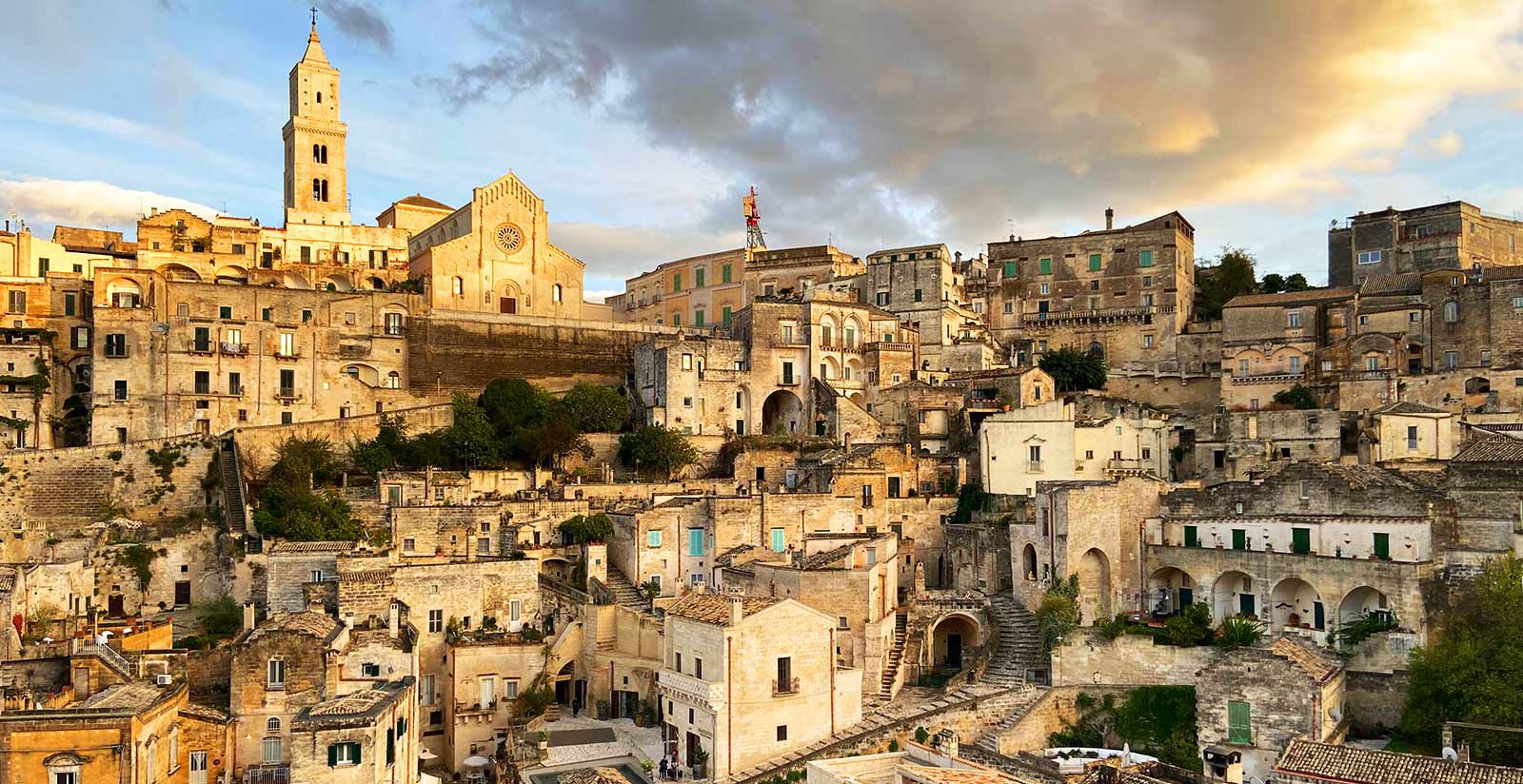-
menu
-
Offers

 prenota ora
prenota ora
Matera is the city of Sassi and UNESCO World Heritage since 1993. It is one of the oldest cities in the world, whose territory preserves evidence of human settlements dating back to the Paleolithic. The original urban core developed from the natural caves dug into the rock and, subsequently, modeled in increasingly complex structures within two large natural amphitheatres that are the Sasso Caveoso and Sasso Barisano. The unrepeatable architecture of the Sassi di Matera tells the ability of man to adapt perfectly to the environment and the natural context, using with mastery simple features such as the constant temperature of the excavated environments, the calcarenite of the rock bank itself for the construction of dwellings above ground and the use of slopes for the control of water and meteoric phenomena.
The architectural structure consists of two systems, the one immediately visible realized with the successive stratifications of houses, courts, ballatoi, palaces, churches, street gardens and gardens, and the inner and invisible one at first sight constituted by cisterns, snow, caves, tunnels and water control systems, essential systems for the life and wealth of the community. The landscape of the stones extends along the ravines that have their origin in the canyon of the nearby town of Gravina in Puglia, whose landscape is in continuity with Matera and whose characteristics are complementary to the same.
